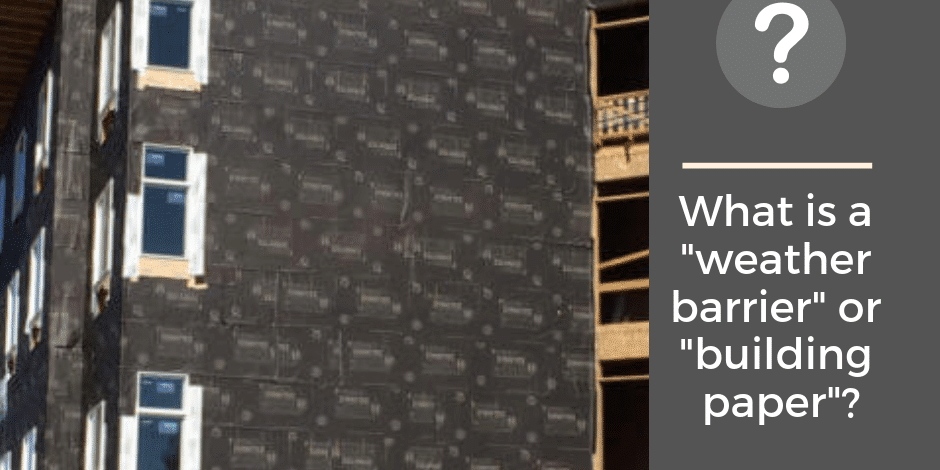
What is a Weather Barrier or Building Paper?
Most walls built on homes, townhomes or condos today are rainscreen walls. That means they have an exterior surface that prevents most water from coming into the wall system, but they permit some water to enter. Behind that exterior surface and between it and the sheathing and framing that make up the wall should be a waterproof barrier. That barrier is commonly referred to by a host of different names: “weather barrier,” “weather-resistant barrier,” “water barrier,” “water-resistant barrier,” “WRB,” “building paper” or “housewrap.”
If continuously and properly installed across the face of the wall, the barrier serves as the last line of defense that keeps rain water from accessing and rotting the wood components behind the barrier.
There are many different kinds of weather barriers — for example, woven versus non-woven—and many different manufacturers of weather barrier products resulting in variations in the quality of the products. Some weather barriers are known to puncture or otherwise fail more easily than others.
Assuming a home has a quality weather barrier product installed, the other issues that can arise related to a weather barrier are in how it is installed. Moving down the face of a wall from top to bottom, each piece of weather barrier above must be installed in a shingle fashion with the piece below it so that water runs down the outside of the weather barrier and cannot get behind it. Similarly, at every penetration in the wall, whether it be a window, door, dryer vent or any other penetration, the penetration must be properly flashed to integrate the weather barrier so that water cannot get behind the weather barrier. Weather barrier can also be installed in a non-continuous manner so that there are areas of the wall where the plywood sheathing is exposed. Often this occurs at the roof line or base of a wall where the installer failed to ensure all of the wall surface was covered by the barrier. Water can get behind the weather barrier at these locations at rot the sheathing and framing.




















